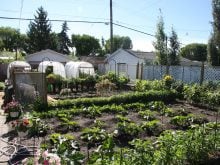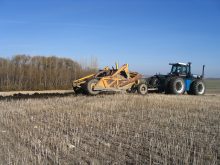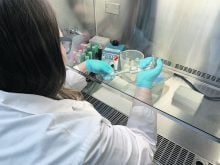Can we breed crops to tolerate both heat and drought, surviving the worst of what a growing season can do?
What exactly happens to an individual plant in your field when Mother Nature turns up the thermostat and the dehumidifier at the same time?
It kills. In fact, it is a long and painful death for the plant, and there’s nothing we can do except hope for rain. That was the theme of Rosalind Buekert’s on-line presentation at the 2021 Saskatchewan Agronomy update. The presentation was titled “Dry, Hot, or Both? Crop Physiology Under Stress.”
Buekert, a plant physiologist at the University of Saskatchewan, said that to understand the intensity of heat and drought, it’s first necessary to know how hot and for how long.
Read Also

Short rapeseed crop may put China in a bind
Industry thinks China’s rapeseed crop is way smaller than the official government estimate. The country’s canola imports will also be down, so there will be a lot of unmet demand.
“If we get days above 28 C, then we will have problems. But 32 C is really where the action is at when it comes to causing problems. If you have three days in a row with six hours of temperature above 32 C, then we will have heat stress,” said Buekert.
She said crops like corn, soybeans or dry beans lets you hike that threshold up to 38 C, which is still short of the 45 C mark where warm season tropical crops can survive. People tend to dwell on the high temperature component and ignore the acceleration factor, which reduces the number of days in the plant’s life cycle.
“Acceleration is our biggest issue. There are fewer days in the life cycle, so the crop has less time to develop. We get less seed and smaller seed. When we look at seed quality, we see higher protein concentrations. Much of this is due to late season seed growth or abortion of the flowers.”
She says split seeding date research in Saskatchewan has shown that earlier seeding is one way to mitigate the impact of heat and drought. And, because heat and drought do often go hand in hand, early seeding can be doubly effective.
Bueckert said when heat starves the embryo, it actually kills the tiny buds, without which there will be no flower and thus no crop. She said high heat is the same as drought. They both can have the same impact on the crop.
When your crop is in a drought situation and simultaneously in a high heat situation, there’s nothing you can do but pray for nature to give you a break. Scientists debate whether we should try to mitigate stress or ameliorate stress.
“Being a pessimist, I think we would do well if we could mitigate the heat/drought situation.”
To mitigate stress would be to simply stop the situation from becoming worse. It would mean breeding better varieties that better fit our climate. That would be earlier flowering crops with a longer flowering duration for better recovery and more seeds that are larger.
To ameliorate stress would be to try improving the situation. It would mean managing with irrigation and stubble management and better manage our fertility regime to match conditions.
“For drought stress we want plants with smaller leaves that would not consume water. For heat stress without drought we want plants with larger leaves to create shade.”















